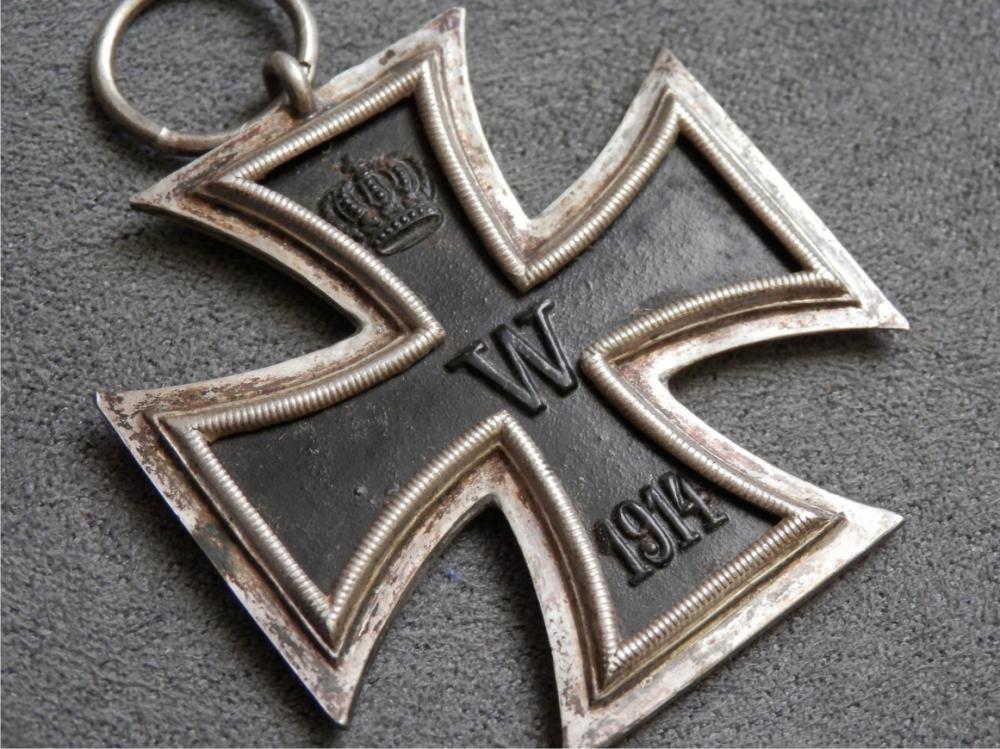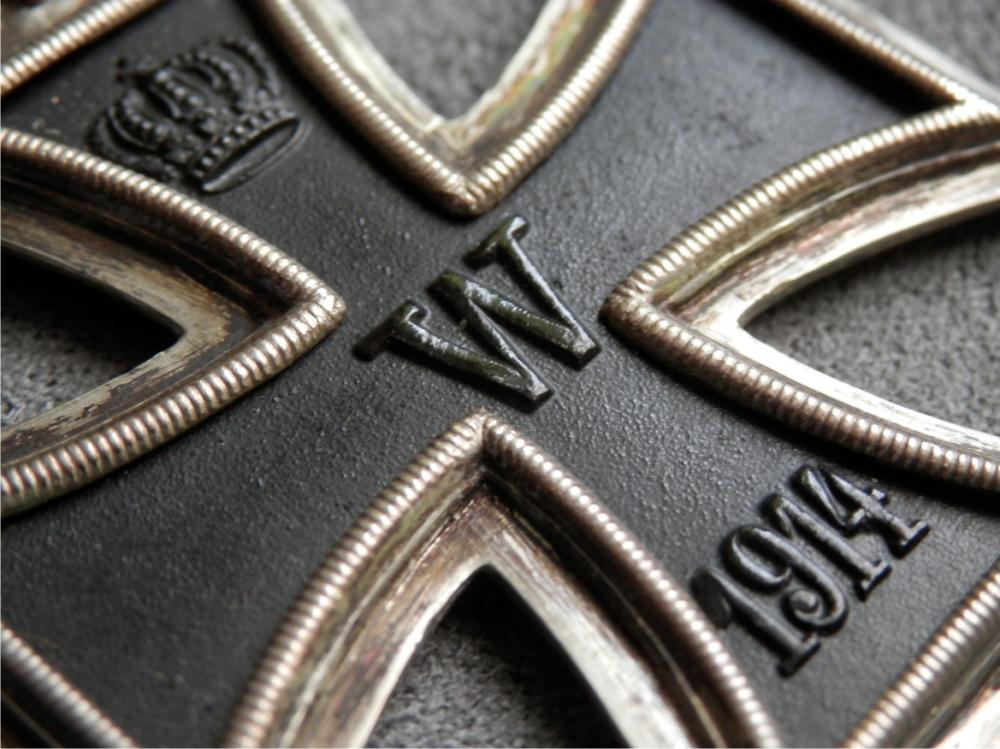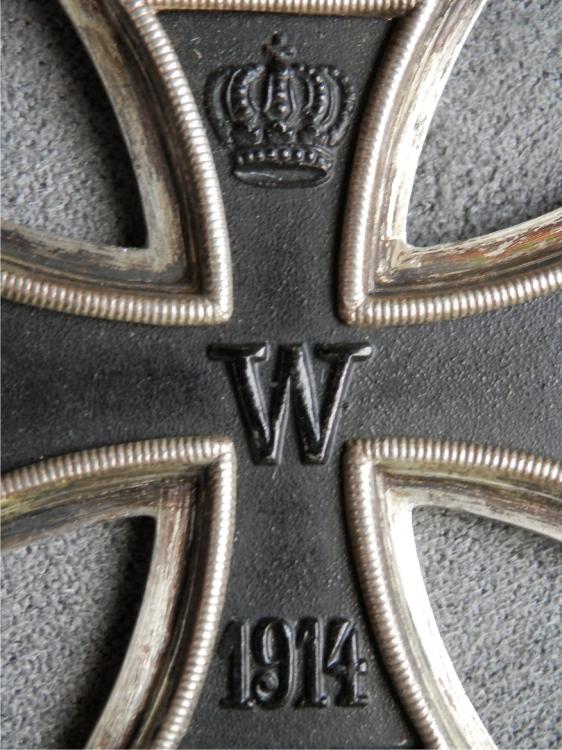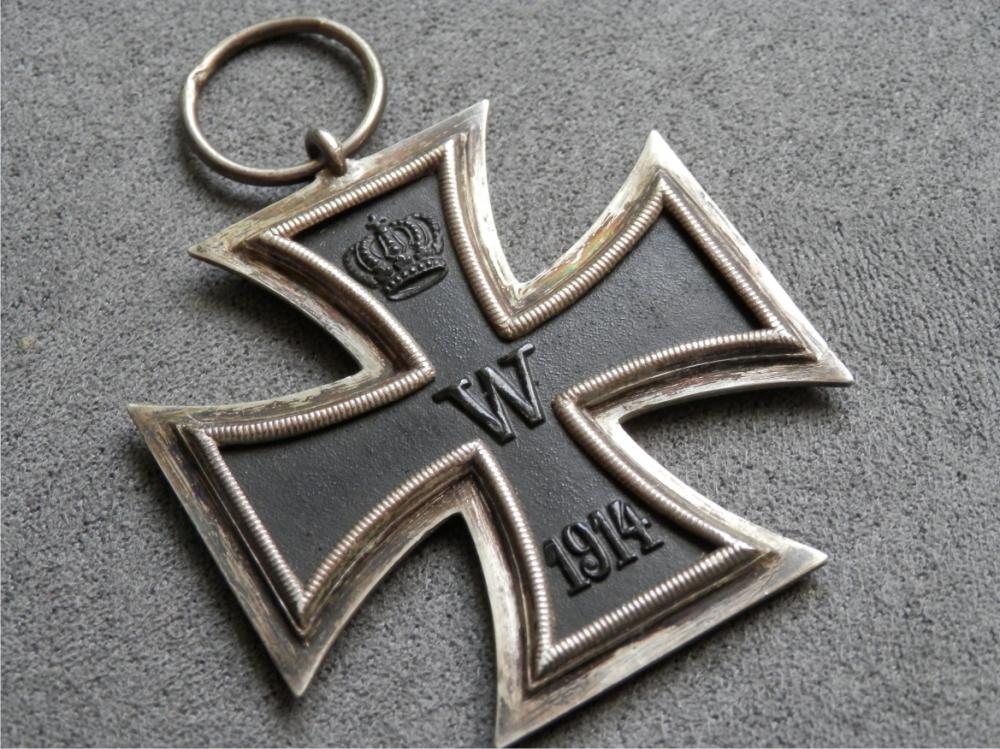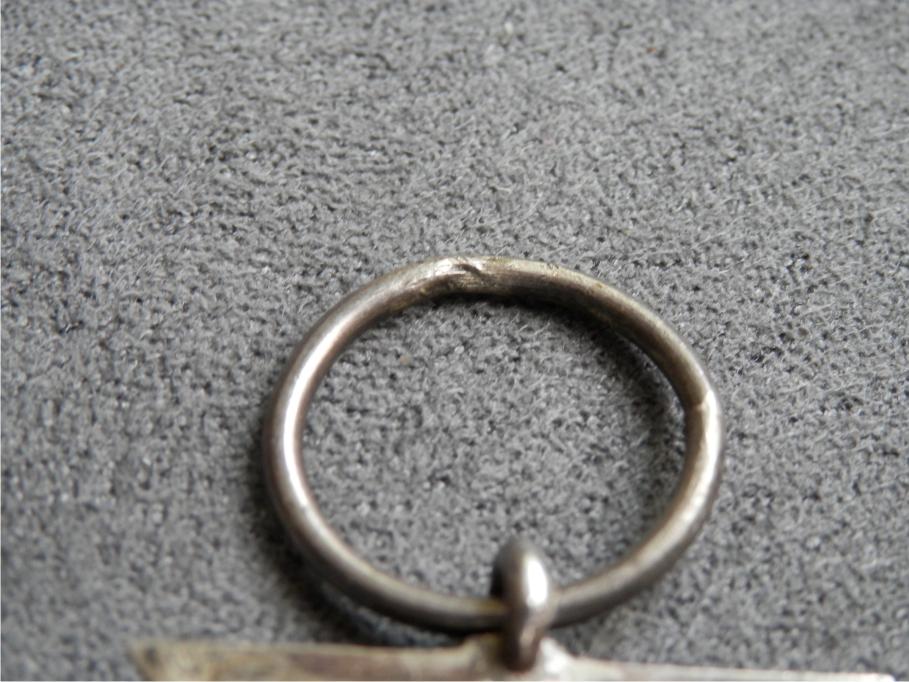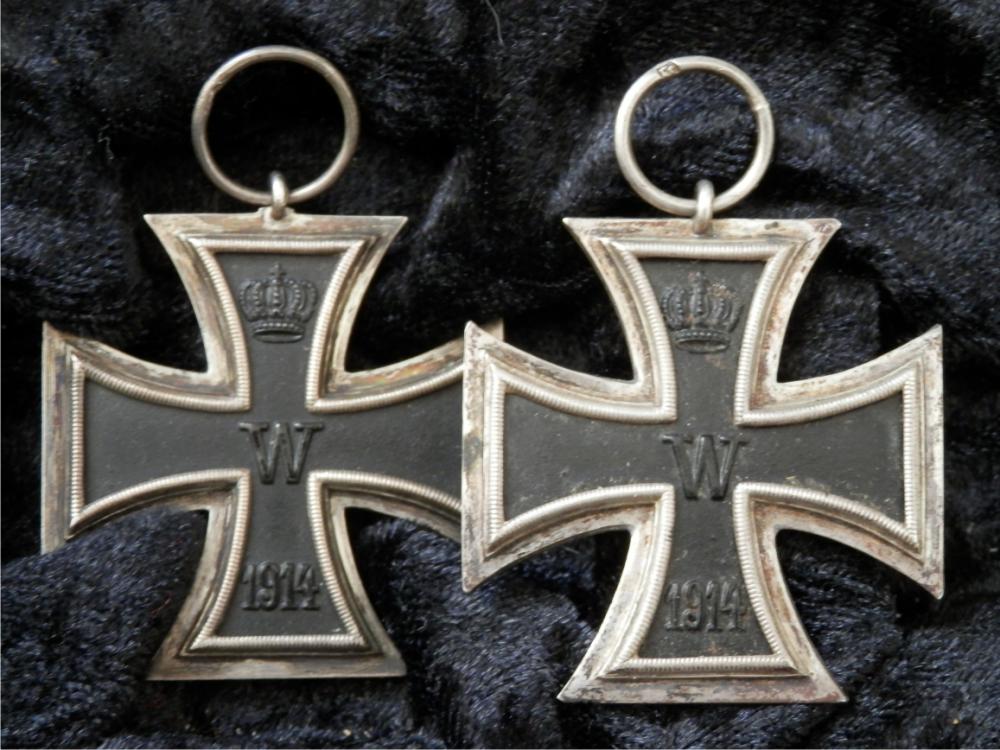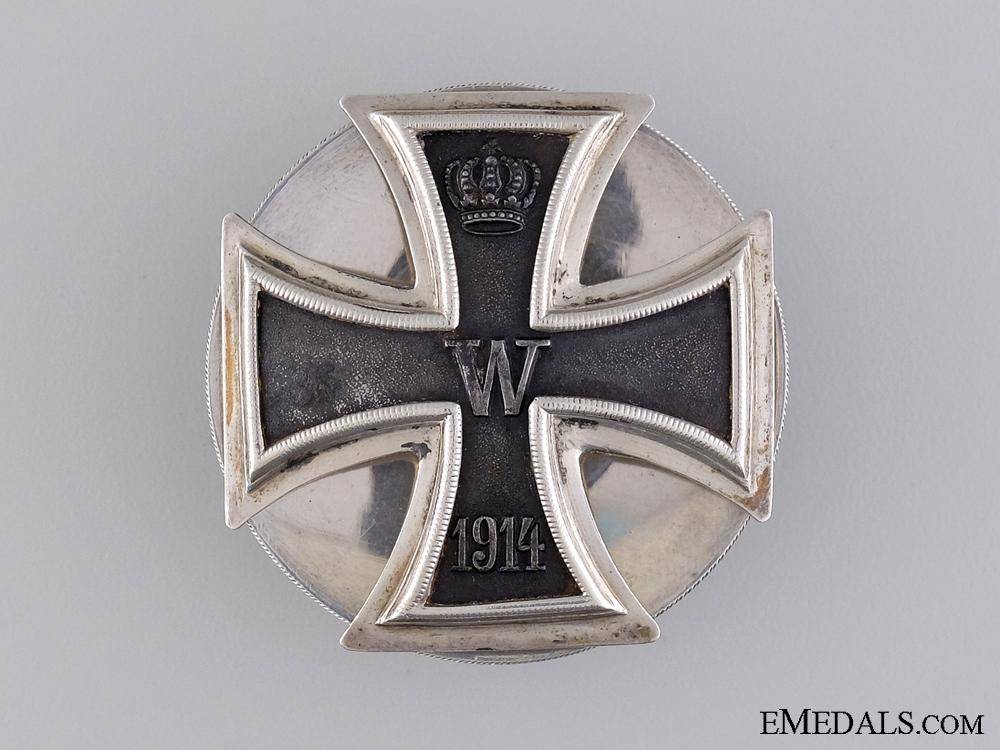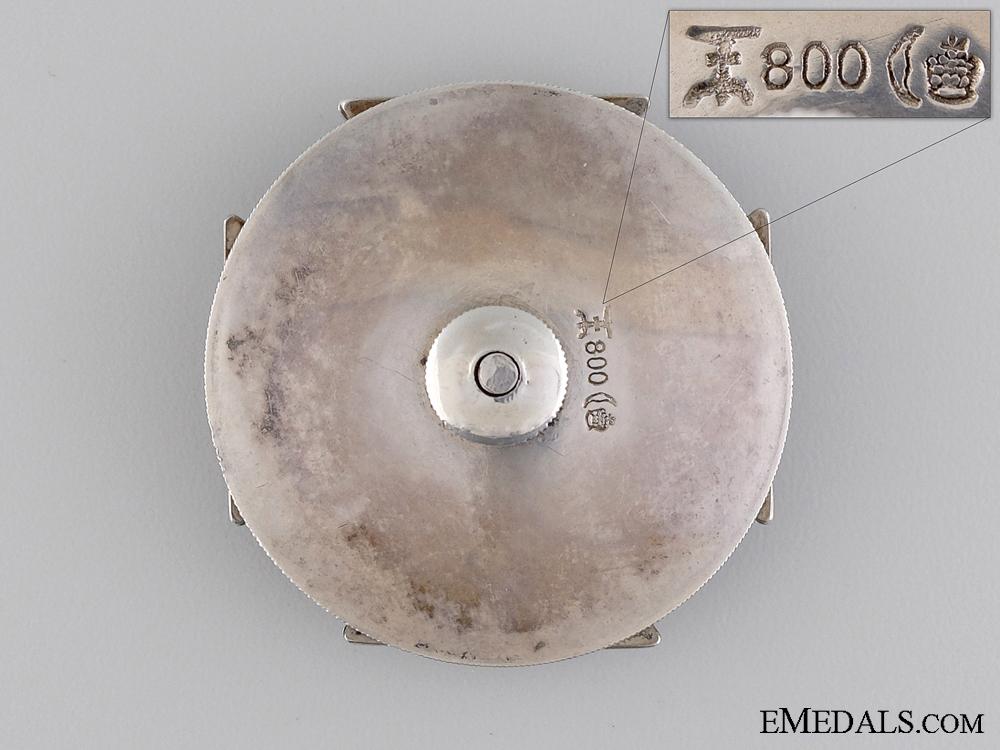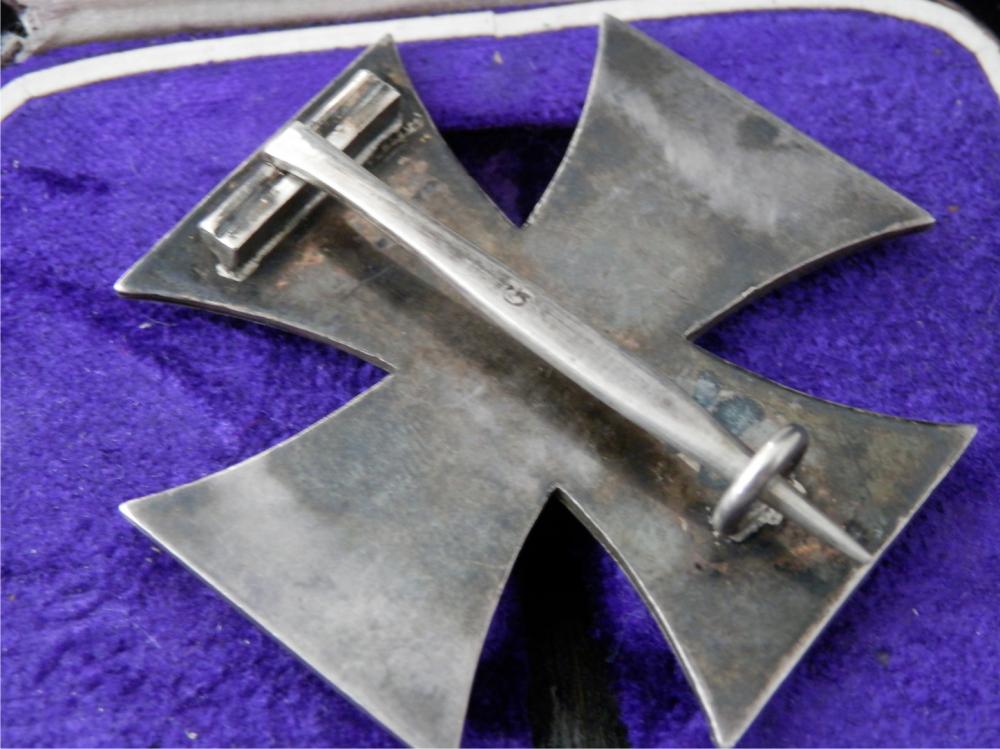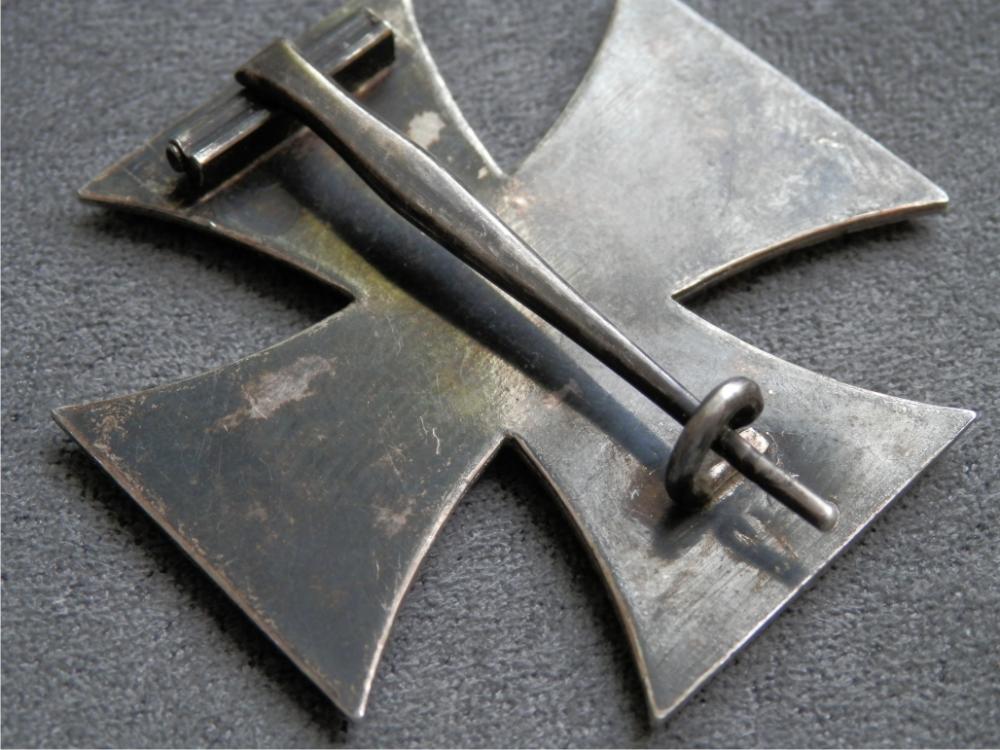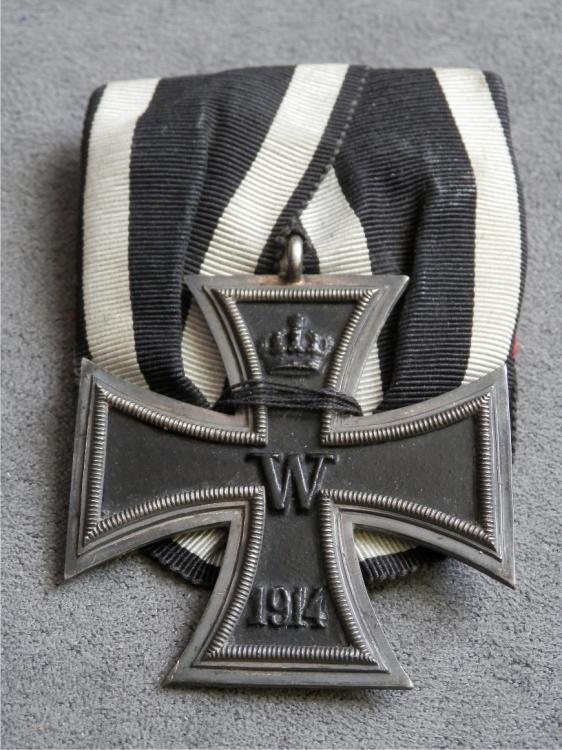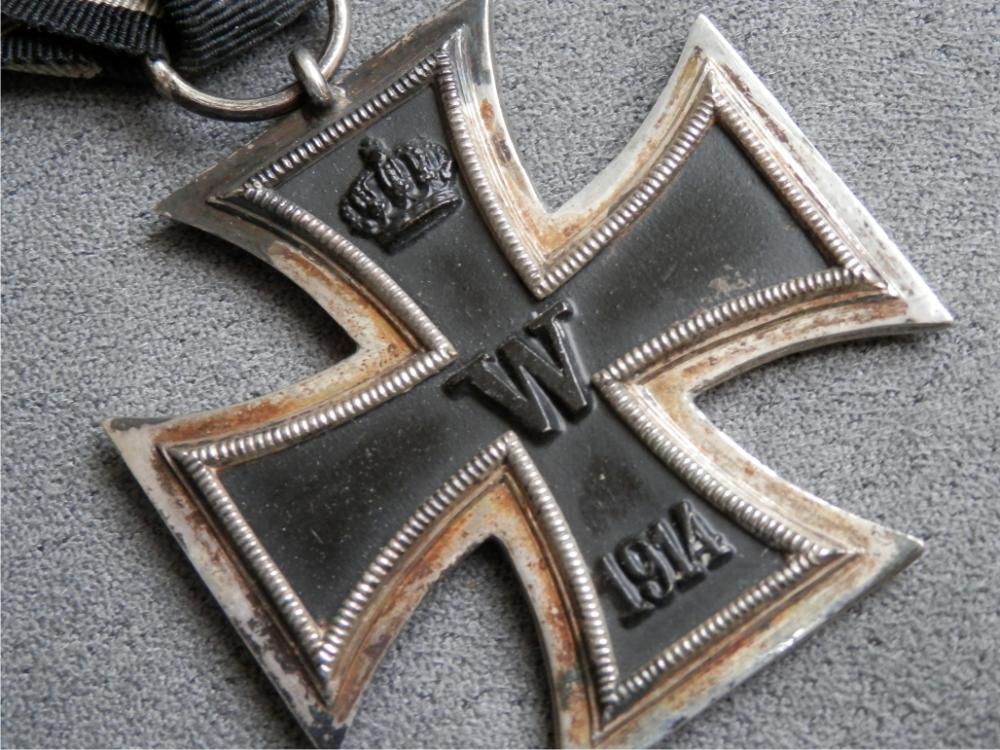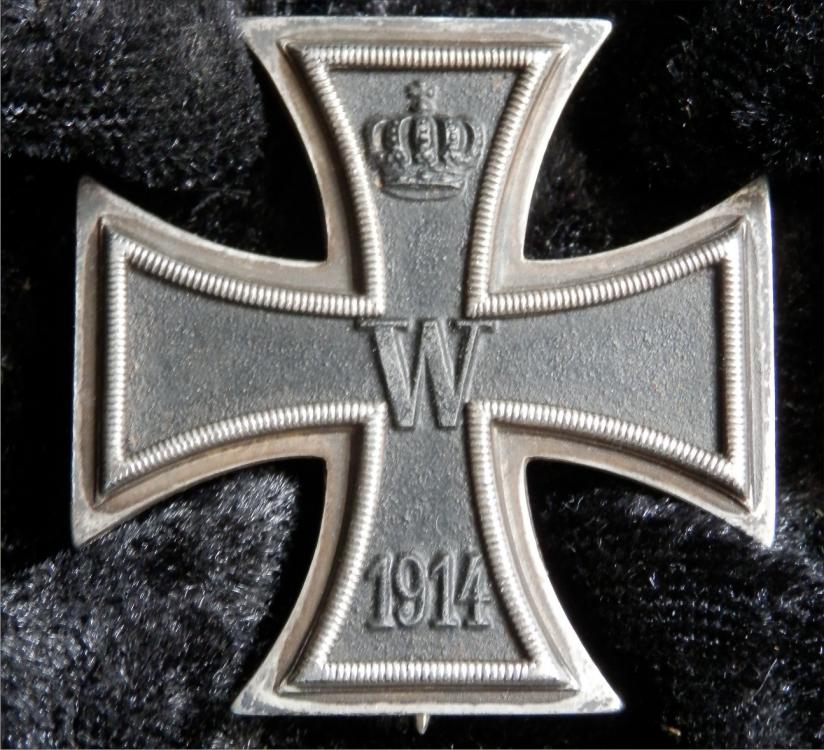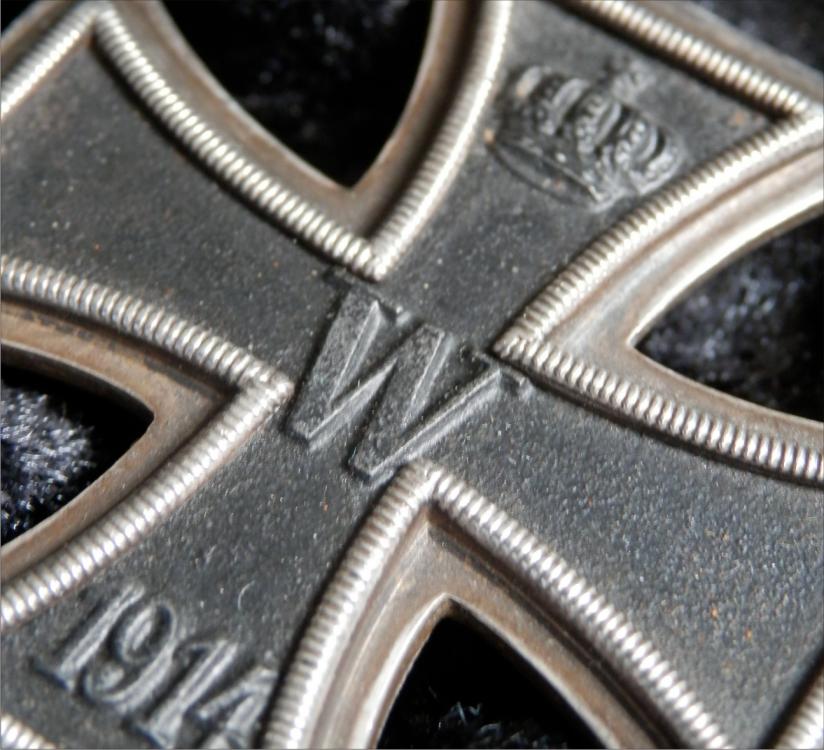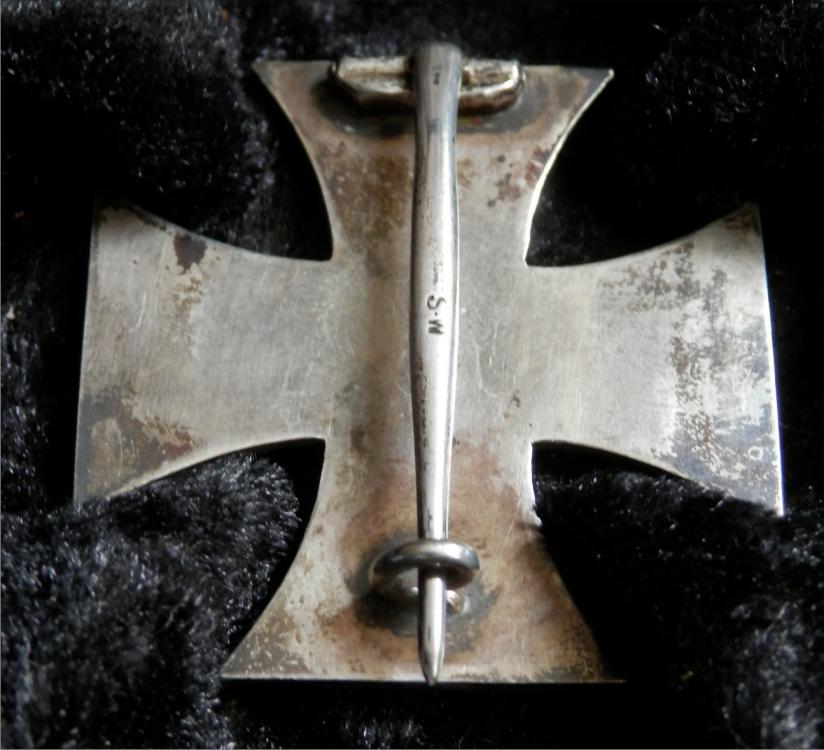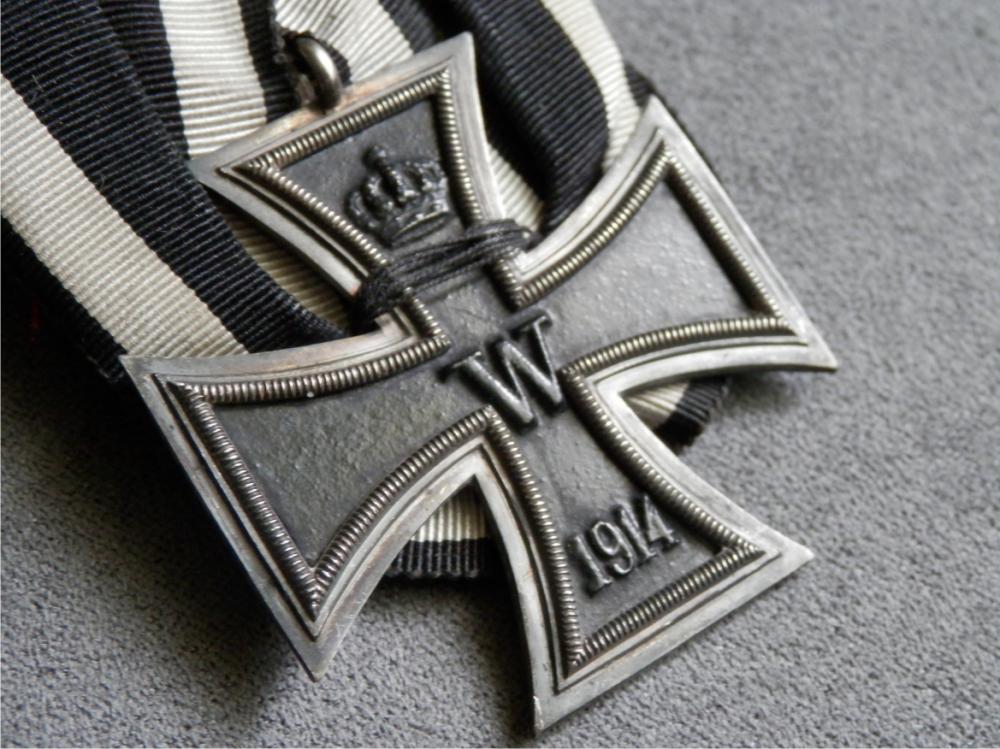-
Posts
237 -
Joined
-
Last visited
Content Type
Profiles
Forums
Blogs
Gallery
Events
Store
Everything posted by kasle
-
I was surprised as well. Same as I was surprised that quite ordinary TR era Meybauer wideframe EK1 1914, that normally goes for 110 - 120 €, sold for around 500 € at the beginning of this year only because it was marked L13. Meybauer slim "Schinkel" frames marked with Meybauer´s "wappen", go for 150 €. To me they are nicer...
-

Maybe my favourite cross maker....
kasle replied to Chris Boonzaier's topic in Germany: All Eras: The Iron Cross
I can´t beat the old man, but I am just quite sure that hardware on the cross on the left is similar to FR (in box) marked crosses, whoever made them. -
I think the rarest cross in not always the most expensive cross. If the particular piece is too rare, nobody knows it and you can buy it cheaply. The most expensive crosses are those who are undoubtely nice and although not too much widespread, they were produced in enough numbers to show up on market occasionally, to fuel the debates on forums and to be posted (and seen) on that forums as well. The best thing is when the maker uses unique core, marks his crosses and - of course - the particular cross is in top, though patinated condition. And at last, but not least, all of this must happen sometimes around Christmas. From what I remember, the top three expensive EK2s 1914 I saw being sold on eBay, are: 3. Hansen/K&B marked Fr, without ribbon: 82 €. 2. Deschler with trifold ribbon: 110 € 1. Ordinary Deumer, marked L/11: 114 € Of course, I am talking about full sizes, not prinzens, sold in auctions. "Buy Now" sellers ask for such value absolutely normally - mainly on US and OZ ebay.
-

Maybe my favourite cross maker....
kasle replied to Chris Boonzaier's topic in Germany: All Eras: The Iron Cross
The hardware on the left one (with shorter hinge) matches to FR - Frank & Reif, or at least is very similar to. -
Lazy Y is my "horse" for Koch & Bergfeld as well. But not by the marking. If you turn "Fr" marked cross upside down, the mark resembles "Pedestal vase" as well. For me the hint is that K&B marked EK1 from the first post has pebbled core. But if somebody finds Hansen marked EK1 with pebbled core, this hint is gone.
-
In search for an answer, which type can be attributed to M. Hansen, and which type to Koch & Bergfeld, I even wrote to K&B company. I didn´t receive the answer, of course. I´d say, no wonder. Company is now on the top of market, producing high-end silverware and sport trophies (the made the trophies for UEFA Champions League, as well as for winners of German football and handball leagues) and probably are not interested in ressurecting "old sins". Still I would see very important to find the answer which type of EK2 is Hansen and which is K&B. It is not wonder that the K&B identification is new to you Chris. Up to now, I have found literally no info about the fact that there are two variants of "Hansen" EK2 crosses.
-
But there surely are two types of them. The first feature that differs them, is the marking. One type is marked with lazy Y (if I can borrow adjective from Juncker terminology), second one with square incused mark "Fr", that is different from "Fr." mark (attributed to Friedländer) only by the missing dot at the end. The maker´s mark is not the only difference. Both types vary in some other features. Lazy "Y" marked crosses have pebbled core, Imperial size ring and platform for the jumpring. "Fr" marked cores have a most common core finnish, TR size of jumpring and no "hump". Here they are. "Y: on the left, "Fr" on the right.
-
All, who are in this hobby at least for a while, know and mostly like the fancy screwbacks by M. Hansen. They are easily identified by the typical screw, as well as by unique core, that was used only by company M. Hansen and by company Koch & Bergfeld, Hansen´s subsidiary in Bremen during (and probably shortly after) ww1. It´s very easy to tell which "Hansen type" EK1 was produced particularly by Koch & Bergfeld, because these are not marked with letters "M. Hansen", but with so called "Pedestal Vase" symbol used by company (now independent) Koch & Bergfeld up to now (see the pics). Unfortunately, similar luck is not accessible between EK2s with the same core and frame. Although we can (sometimes) find them on market and easily identify by the core and the distinctive frame (that has crunch beads at inner corners similar to AWS/Juncker), the marking on them doesn´t help us at all.
-

The REAL Early crosses....
kasle replied to Chris Boonzaier's topic in Germany: All Eras: The Iron Cross
Thank you, Trevor, for your support. That A type 1914 is not seen very often. I think one picture of such piece in this thread is worth half of what have been written. I think that answer to your question, Chris, depends on the maker. S-W and Godet were the most disciplined in marking their crosses. From beginning, to the end. Although in both cases some exceptions happened. On the other hand, there are some sandcast crosses, I still can´t find marked. There is really no rule or tendency to rely on, IMO. For me the toughest maker to incorporate to any theory is MFH (probably Max Fleck und Sohne Hamburg) with his magnetic frames, always marked EK2s and always unmarked EK1s. Now I am slowly leaning out of topic, because I am not even sure if MFH´s are considered awarded pieces, but probably they are not. -

The REAL Early crosses....
kasle replied to Chris Boonzaier's topic in Germany: All Eras: The Iron Cross
All we can incorporate - or borrow - from TR era, Brian, is the method, not the statement that resulted from this method. Incorporating TR results to Imperial era without checking the method already brought many confusions. Sandcast cores in TR era are (correctly) considered as fakes, for example. -

The REAL Early crosses....
kasle replied to Chris Boonzaier's topic in Germany: All Eras: The Iron Cross
Every question more or less implies a theory. There is nothing wrong with it. I refuse to believe that maker´s codes have something to do with (or are helpful in) award/private purchase identification. I would borrow the argument from you, Chris. Some award pieces are unmarked, because in the tide of war there was no time to mark them all. If we are prepared to accept that some vaulted pieces were handed over as awarded only because of wartime lack of sources (and time) then we must accept even quicker, that same thing happened to unmarked crosses. I think (and I am repeating myself again) there is a quick method how to tell which Godet is earlier, later, or postwar just by frame condition comparison. It´s the same method as is used to put correct timeframe to S&L Knights crosses (wartime and postwar) by dividing them to A,B,C or D frame according to flaws developed on them. It takes only one person having Sandcast Godet, flat unmarked Godet, flat Godet marked G, vaulted private purchase marked GODET BERLIN and postwar wideframe. It would be good to have at least three pieces of each type to ensure, if there is no frame condition difference between crosses of same type. As I said, I am not that man. -

The REAL Early crosses....
kasle replied to Chris Boonzaier's topic in Germany: All Eras: The Iron Cross
1. Yes, but in this case these should have had more differences between themselves than only the stamp. Mainly the frame condition (different die wear), if not some hardware variations. We see them even on "boring" KOs. They started with brutal hinge, then modified it - in the timeframe of months. And don´t forget, sandcast Godets would have to fit to this theory as well. But they still refuse to. 2. Yes, I was using extreme comparison, because it is what happens when you break the rules. It always start with innocent exception with small differences and ends up with extreme "vaulting" of the opinions - and prices as well, where the lower extreme is always being used as an example to justify the higher extreme.. -

The REAL Early crosses....
kasle replied to Chris Boonzaier's topic in Germany: All Eras: The Iron Cross
To you question, Brian: Yes I was posting S-W pieces, because S-W and Godets are only two makers from which I have both sandcast and die stamped cores to compare the frame condition. I used them as such not as an example of some WS connection. -

The REAL Early crosses....
kasle replied to Chris Boonzaier's topic in Germany: All Eras: The Iron Cross
To your last statement, Chris: In general, vaulted crosses were not awarded pieces, I think we are quite sure with this, but exception could happen from reasons mentioned above in your last post, with which I agree completely. War is not an Ordengesetz. The question is - what do we collect? Common crosses as exceptions? Ok, then every EK2 1939 can be considered as Ritterkreuz, because EK2s were occasionally worn around the neck, in the time when soldier was verbally awarded with RK, but he didn´t receive the piece yet. Every EK2 1914 mini can be considered as Grosskreuz, because it has inline loop as GKs had - and if GK owner would had ordered GK mini, it would looked precisely the same. This attitude is crazy and destructive to the hobby. I am supporter of opposite attitude, where we must look at pieces in general, i.e. according to general rules. And if there is some exception, it can be accepted as such, but only according to that particuar cross and only with stone cold proof associated with that particular piece. -

The REAL Early crosses....
kasle replied to Chris Boonzaier's topic in Germany: All Eras: The Iron Cross
Sorry for not using quoting, but I still didn´t somehow managed to use it correctly. So I will stay with numbers, if you don´t mind. 1. Very good argument, I use it many times, but in this case doesn´t work. The opinion that A type was in production (and not only in offer) up to 1914 (and even longer) is supported by the fact of slowly deceasing quality. The latest pieces are made from really worn die. The crown has not crisp detail at all with nearly no visible beads. The date numerals have visible flaws - mainly obverse 8 and 0. The 0 numeral, undoubtely fat on early pieces, is thin on latest ones, nearly as thin as on 9th bead fakes. And, on top of it, the latest pieces have painted core. 2. My understanding of the thing is that sandcast cores were (if not absolutely, then at least mostly) bought from Iron foundries, not produced by small companies on their own. Jeweler is jeweler because of silver frame, not because of the iron core. I know it from modern experience, jewelers here - despite of improved technology - refuse to work with other metals than gold, silver and bronze. They don´t have education for it, experience, or even tools. And I am not speaking only about Iron, but about tombac, neusilber, or brass as well. I believe that big jewelers could have privilege of having owned or at least subcontracted their own foundry, but smaller jewelers had to rely on generic pieces mostly. So if such thing hapenned - i. e. one day core supplier informed them that there will be no sandcast cores, but die stamped and it will be cheaper - they just had to say: "Fine..." 3. Yes, dealers like quick decisions that look clear. But it was not that easy. If EK1s are mostly marked, than I have (or had) all those exceptions. The best example are two Godets I had - both flat pinbacks with silver frame. One was marked G, second one unmarked. Otherwise totally identical pieces with same hardware, frame condition and stamped core. If the marked one was awarded piece, than the unmarked Godet should be - according to your theory - private purchase. But where the hell is silver hallmark, typical for privately purchased solid silver crosses? Sorry, but I am convinced both were awarded pieces, while privately purchased were those vaulted with sidehooks, or with fancy eliptic screws. Again, the comparison of frame condition between flat and vaulted Godets would tell us more, but, unfortunately, I still didn´t made it to own and inspect those private purchased ones. -

The REAL Early crosses....
kasle replied to Chris Boonzaier's topic in Germany: All Eras: The Iron Cross
Here is comparison of frame condition between early sandcast Godet EK2 and postwar (probably TR) stamped wideframe. -

The REAL Early crosses....
kasle replied to Chris Boonzaier's topic in Germany: All Eras: The Iron Cross
-

The REAL Early crosses....
kasle replied to Chris Boonzaier's topic in Germany: All Eras: The Iron Cross
4. I can´t really beat the argument that some companies kept producing crosses in old technique, but from what we know, and can be sure, both Wagner and Godet started the war with producing sandcast blackened cores, Wagner - on top of it - in 1870 design - so called B type 1914 cross (see the posted pic). We know it because frames are stamped from crisp die. On later pieces from both makers, the frame always looks worn. -

The REAL Early crosses....
kasle replied to Chris Boonzaier's topic in Germany: All Eras: The Iron Cross
1. I think there is no 40 years gap. A type cross, as well as Godet B type cross are known to be produced up to the 1914. 2. Technique of stamping and painting cores is quicker than sandcasting/blackening and allows mass production. This is the reason why companies switched to it. I don´t know anything about production price of both technigues, but if you have written order from Kaiser for 100.000+ crosses, you really have no problem with switching techniques, because it is supposed that the price of doing so is incorporated to the price of whole deal. 3. For me it is really new statement, that unmarked crosses are private purchases. As I understood it up to now, the signals of private purchase are - silver content hallmark, vaulting of the cross, using other than pinback hardware. As I know, only about 20% of ww1 Iron crosses are marked. Do you think it means, that 80% are private purchases? -
It´s a watch fob, I´d say
-
K&Q is company Klein and Quenzer from Oberstein. They were making civilian jewelery before ww1 and then again in 30´s when demand for ww1 awards ceased. Nothing strange to see this mark on vintage wedding rings or "schmuck" chains, mainly in USA, which were their main export partner before ww1.
-

The REAL Early crosses....
kasle replied to Chris Boonzaier's topic in Germany: All Eras: The Iron Cross
Now I see that pictures have displayed randomly, so the order is - Wagner, unknown, Godet, and again some Wagner pics. -

The REAL Early crosses....
kasle replied to Chris Boonzaier's topic in Germany: All Eras: The Iron Cross
I personally think that if the GODET mark on 1870 crosses and on 1914 private purchased pieces were the same, Chris theory would have some chance. But these MMs doesn´t match. They are the same only in presenting full Godet name, but it is not the same stamp. Same with Wagner, another jeweler from "Berlin five". We don´t see "14 LÖTH" on 1914 crosses. Secondly - and this opinion is more food for thoughts than argument - there was no reason for jewelers to hurry at the beginning of ww1. Their experience was different, that it seems from our "Divine" perspective (in the sense that we know what happened next). They knew there was postwar "verliehung" after Napoleonic wars, as well as after Franco-Prussian war. So no need to hurry - yes, these companies were driven by profit, but Imperial Germany was not todays USA. They (Godet, Wagner etc) were "Hofjuweliere", they could be sure to receive the orders first. Here are some sandcast cores. EK1 Wagner, EK2 Godet and EK2 unmarked.


